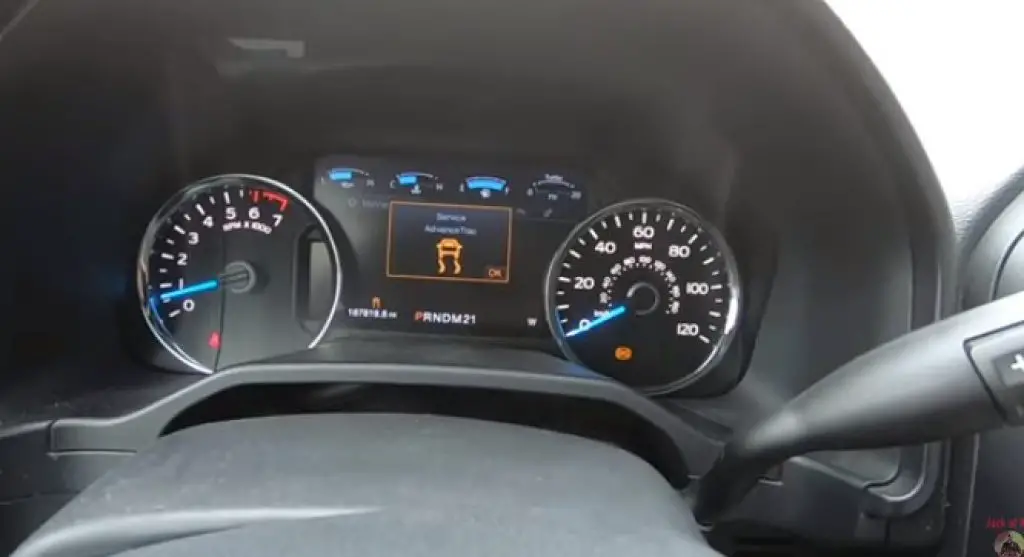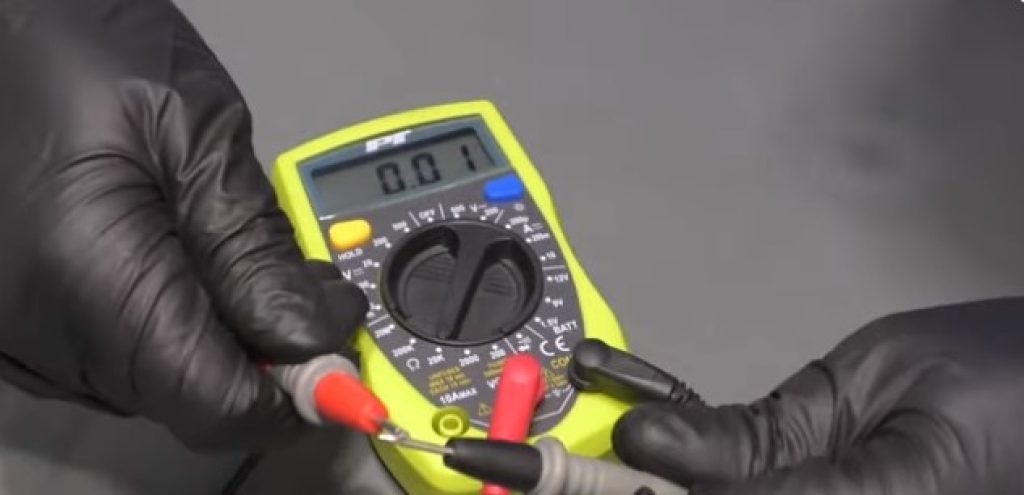Ford F150 Speed Sensor Location
Ford F-150 speed sensor is located on the rear section of the transmission. It measures the transmission/transaxle output or wheel speed.
In this guide, we’ll cover:
- Where exactly to find the speed sensor in your Ford F150
- Symptoms that suggest your speed sensor may be faulty
- How to diagnose issues related to the speed sensor
- Step-by-step guide to replacing the speed sensor
Stay tuned to get your Ford F150 back in tip-top shape.
Where exactly to find the speed sensor in your Ford F150
Ford F-150 speed sensor is located on the rear section of the transmission.
The VSS can be located in the following places:
- The transmission case
- The rear differential assembly
- The ABS system
- The leadframe inside the transmission
- The transmission housing on the passenger side output flange
Common Symptoms of a Ford F150 Faulty Speed Sensor
If you’re experiencing odd behavior from your Ford F150, the speed sensor could be the root cause. Below, we’ll walk through the most common symptoms you’ll notice when the speed sensor is acting up.
ABS or TCS Warning Lights
The Anti-lock Braking System (ABS) and Traction Control System (TCS) rely heavily on the speed sensor. When the sensor fails, these systems can malfunction.

How the Speed Sensor Affects ABS and TCS Systems
Your speed sensor sends critical data to both the ABS and TCS. When it’s faulty, these systems may not operate as they should, triggering warning lights on your dashboard.
Speedometer Issues
A faulty speed sensor can mess with the accuracy of your speedometer.
Effects on Speedometer Accuracy
If the speed sensor isn’t working correctly, your speedometer might show incorrect speeds or even fail to work at all.
Remember: Driving with an inaccurate speedometer can result in speeding tickets or dangerous situations.
Check Engine Light
Context: A malfunctioning speed sensor can cause the check engine light to illuminate on your dashboard.
Correlation with the Speed Sensor
The engine control unit relies on the speed sensor for vital operations. If the sensor sends incorrect data, the check engine light might come on.
Transmission Problems
Your vehicle’s transmission also depends on the speed sensor.
How a Faulty Speed Sensor Affects Transmission
A bad speed sensor can mess up the timing and shifting of gears, leading to rough or untimely shifts.
Fuel Economy
The speed sensor plays a role in optimizing fuel consumption.
Impact on Fuel Efficiency
If the speed sensor is faulty, the engine might not optimize fuel usage, leading to increased fuel consumption.
Related Symptoms
These are other symptoms you might experience:
- Stall or Hesitation: Your vehicle might stall or hesitate while driving.
- Loss of Power: A noticeable drop in the vehicle’s power.
- Vibration or Shaking: Unexplained shaking or vibration while on the road.
- Difficulty in Starting: Struggling to start your vehicle could also point to a faulty speed sensor.
Can a Faulty Speed Sensor Cause a Tire Pressure Sensor Fault in an F150?
A faulty speed sensor in an F150 can indeed cause troubleshooting tire pressure sensor faults. When the speed sensor fails, it can send incorrect data to the vehicle’s onboard computer, which can then result in false readings from the tire pressure sensor. As a result, it becomes crucial to address the speed sensor issue promptly to rectify any related faults accurately.
Diagnosing a Ford F150 Faulty Speed Sensor
If you’ve noticed any of the symptoms mentioned earlier, the next logical step is to diagnose the issue. This section will guide you through various methods to assess the health of your Ford F150’s speed sensor.
Visual Inspection
Before diving into technical tests, a good starting point is to visually inspect the speed sensor and its connectors.
Checking the Speed Sensor and Connector for Damage
Begin by locating the speed sensor, usually situated on the rear of the transmission. Look for any visible damages like cracks, corrosion, or loose connections.
Using a Scan Tool
A scan tool provides real-time data and can be invaluable in assessing the condition of your speed sensor.
How to Interpret Speed Sensor Signal Data
Connect the scan tool to your vehicle’s OBD-II port and navigate to the speed sensor data. Compare the readings to your actual speed to check for discrepancies.
Multimeter Testing
If you don’t have a scan tool, a multimeter can also give you insights into your speed sensor’s condition.

Measuring Resistance to Gauge Sensor Health
Disconnect the sensor and use the multimeter to measure resistance between its terminals. The readings should align with the specifications in your vehicle’s repair manual.
Supplementary Diagnostic Tips
For those who want to be extra thorough in their diagnosis, here are some bonus tips:
Compatibility of Scan Tools:
Always check if the scan tool you’re using is compatible with your Ford F150 model.
Setting the Correct Resistance Range on a Multimeter:
Ensure the multimeter is set to the correct resistance range before testing to get accurate results.
Precautions During Multimeter Testing:
Be cautious not to touch the metal terminals with your fingers to avoid damage to the sensor.
Replacing the Ford F150 Speed Sensor
Replacing a faulty speed sensor in your Ford F150 is a manageable task if you’re comfortable with basic automotive work. This guide will walk you through the process step by step, ensuring you can do it efficiently and safely.
Disconnecting the Sensor Connector
The first step in the replacement process involves disconnecting the speed sensor connector.
Location and How-To
The speed sensor connector is usually located near the rear axle, close to the differential. To disconnect it, press down on the locking tab and pull the connector apart.
Removing the Sensor
Once disconnected, the next step is to remove the speed sensor itself.
Tools Needed and Steps
You will need a socket wrench for this step. Locate the bolt holding the sensor in place and use the wrench to loosen and remove it.
Applying Grease to the New Sensor’s O-Ring
Before installing the new sensor, a bit of preparation is needed.
Why It’s Necessary
Applying a thin coat of automotive grease to the O-ring on the new sensor helps create a better seal, preventing leaks.
Installing the New Sensor
With the area prepared and the new sensor greased, it’s time for installation.
Torque Specifications
Place the new sensor into the slot and hand-tighten the bolt. Then use a torque wrench to tighten it to the specifications mentioned in your vehicle’s repair manual.
Reconnecting the Sensor Connector
The final step is to reconnect the sensor connector.
- Ensuring a Secure Connection
After installing the new sensor, reconnect the sensor connector until it clicks into place, ensuring it’s secure.
4 Bonus Replacement Tips
For a smooth replacement process, consider these extra tips:
- Using the Correct Tools: Always use the right size socket and torque wrench for the job.
- Avoiding Damage to the Axle Threads: Be cautious while removing the bolt; you don’t want to strip the axle threads.
- Pre-Installation Cleaning: Before installing the new sensor, clean the area to avoid contaminating the new part.
- Post-Installation ABS and TCS System Tests: After installation, test the ABS and TCS systems to confirm they’re functioning correctly.
Conclusion
You did it! You’re now well-equipped to tackle any issues with your Ford F150’s speed sensor. From spotting the warning signs to rolling up your sleeves and doing the fix yourself, you’ve got this covered. So go ahead, give yourself a pat on the back, and hit the road with confidence!

